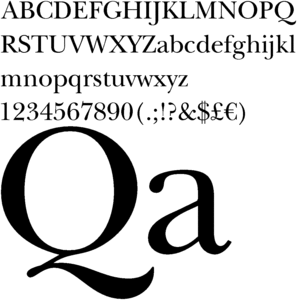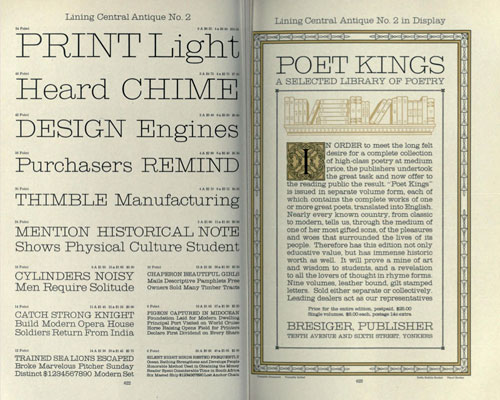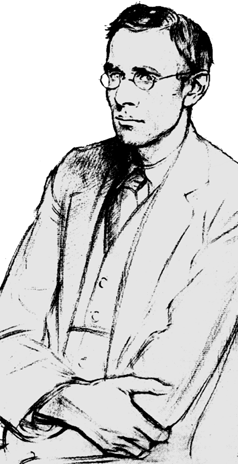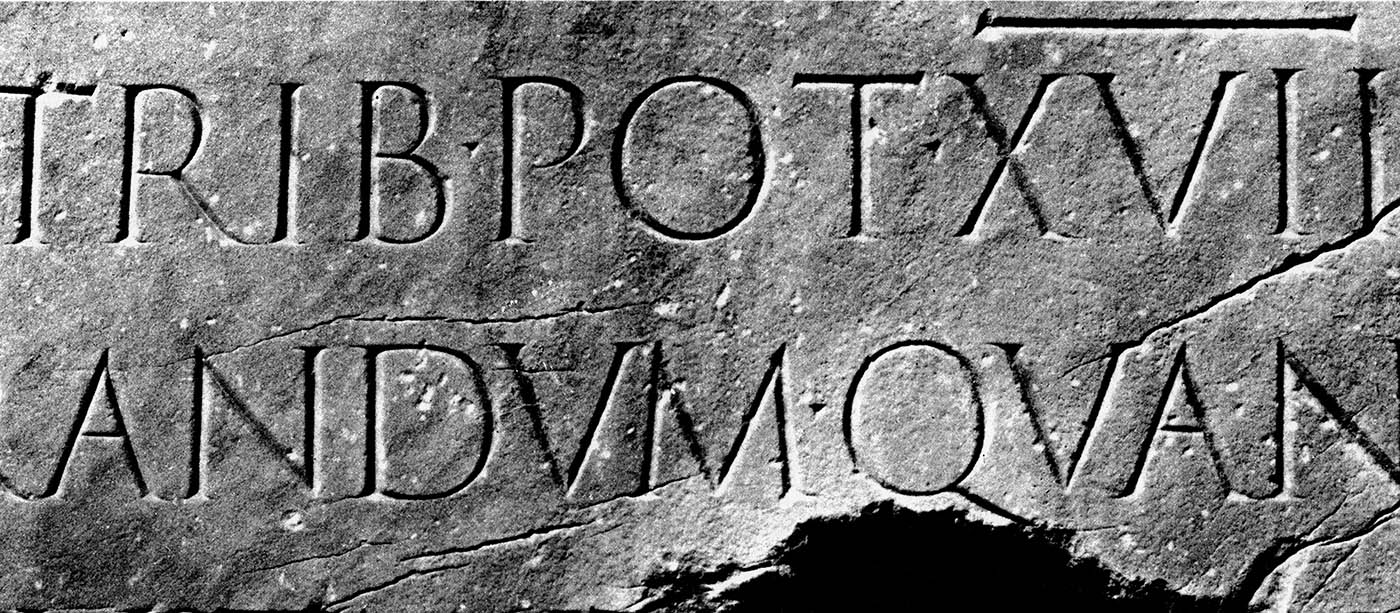
There are several terms that are regularly used when discussing font faces that may not be commonly understood by the layperson. This introduction to my typography blog will cover the definitions of some of those basic terms. The definitions I'm using here are found in Typographic Design: Form and Communication, 5th edition. However, these are terms that date back to the beginning of of printing and moveable type and similar definitions can be found elsewhere.
Describing Letters
Baseline: The imaginary that the base of each capital sits.
Capline: The imaginary line that runs along the top of the capital letters.
Meanline: The imaginary line that establishes the height of the body of lowercase letters. This is often the 'mean' between the Capline and Baseline.
Beard line: The imaginary line that runs along the bottom of the descenders.
x-height: The distance from the Baseline to the Meanline. This is typically the height of lowercase letters (most easily measured on the lowercase 'x').
Optics: All characters align optically on the Baseline. The body height of lowercase characters align optically at the x-height and the tops of the capitals align at the top of the Capline.
Ascender: A stroke on a lowercase letter that rises above the Meanline.
Descender: A stroke on a lowercase letter that falls below the Baseline.
Serif: The short strokes that extend from and at an angle on the upper and lower ends of the major strokes of a letterform.
Sans-Serif: Describes a letterform without Serifs.
Stroke: Any of the linear elements within a letterform.
There are additional terms describing the nuances of type (Bowl Counter, Ear, Eye, Hairline, Leg, Spur, Stem, Tail...) that I may further cover in later posts if the need arises, when discussing specific fontfaces.
Weight: The ratio between the relative width of the strokes of a letterform and its height. This is described as Bold or Light.
Width: The ratio between the black vertical strokes and the intervals of white (i.e., whitespace or negative space - the enclosed area - bowl, loop or eye). This is described as Expanded or Condensed.
Thick/Thin Contrast: The visual relationship between a letters thickest and thinnest parts.
Stress: The visual axis of a letter.
Letterspacing
Leading: (pronounced LED-ing) The vertical space between lines of text. The name comes from original typesetters would add pieces of lead between lines of type to create more space. Non-designers are most familiar with this concept from the program Microsoft Word where it is simplified as 'single' or 'double-spaced'. In this example, the term 'double-spaced' would mean that if you are using a 12 point font there would be a (approximately) 24 point space between lines. More Leading (in the 'double-space' example) makes each line of text easier to read. Most books read for leisure would have more leading.
Tracking: Tracking is the consistant horizontal spacing between characters. Smaller type tends to need a wider Tracking, while Larger type like headers or titles can have a tighter Tracking.
Kerning: The horizontal spacing between individual characters. This is different between Tracking because it deals specifically with pair of characters. You may apply Tracking to a block of text, but you would apply Kerning to individual letter pairs to adjust them if they look spaced visually incorrect.
Sources
Carter, Rob, Philip B. Meggs, and Ben Day. Typographic design: form and communication. 3rd ed. New York: John Wiley & Sons, 2002. Print.
Dodd, Robin. From Gutenberg to opentype: an illustrated history of type from the earliest letterforms to the latest digital fonts. Vancouver: Hartley & Marks, 2006. Print.
Type samples image used without permission, from Typographic Design: Form and Communication, 5th ed., Carter/Day/Meggs
 Serifa is an Egyptian font – also known as slab-serif – meaning that is has thick, blocky serif that appear to be heavier than the letterform itself. Serifa was also designed by Adrian Frutiger – for more information on Adrian Frutiger, see my post on Univers. Serifa was designed in 1966 for the Bauer Foundry. Similar to Frutiger’s Univers design, he designed Serifa on a grid system, regular weight (or 'parent' face or ‘Roman’) was referred to as 55, italic 56, bold 65, black 75, light 45 and light italic 46. Serifa differs from other Egyptian typefaces (like Rockwell and Memphis) because of its more Humanist design – meaning it is based on the original Roman capitals.
Serifa is an Egyptian font – also known as slab-serif – meaning that is has thick, blocky serif that appear to be heavier than the letterform itself. Serifa was also designed by Adrian Frutiger – for more information on Adrian Frutiger, see my post on Univers. Serifa was designed in 1966 for the Bauer Foundry. Similar to Frutiger’s Univers design, he designed Serifa on a grid system, regular weight (or 'parent' face or ‘Roman’) was referred to as 55, italic 56, bold 65, black 75, light 45 and light italic 46. Serifa differs from other Egyptian typefaces (like Rockwell and Memphis) because of its more Humanist design – meaning it is based on the original Roman capitals. In 1954, the method for creating typefaces was changing. The Lumitype:Photon machine – a machine that would expose photographic paper by shining light through a disk containing the desired font – changed the way typesetters were deigning typefaces. Adrian Frutiger was one of the first of those designers to design for this new machine. In just a few days Frutiger came up with the design that would become Univers, originally wanting to call the design 'Le Monde' and then, when that was rejected, 'Galaxy'. Keeping with the astrological reference, Univers was accepted. Univers is considered the first sans-serif of the photo setting age.
In 1954, the method for creating typefaces was changing. The Lumitype:Photon machine – a machine that would expose photographic paper by shining light through a disk containing the desired font – changed the way typesetters were deigning typefaces. Adrian Frutiger was one of the first of those designers to design for this new machine. In just a few days Frutiger came up with the design that would become Univers, originally wanting to call the design 'Le Monde' and then, when that was rejected, 'Galaxy'. Keeping with the astrological reference, Univers was accepted. Univers is considered the first sans-serif of the photo setting age.
 Baskerville, the letterform, is known for its wider form and moderate stroke. It is noted that Baskerville gives a page a light gray appearance because of its form width and balance with the pages white space.
Baskerville, the letterform, is known for its wider form and moderate stroke. It is noted that Baskerville gives a page a light gray appearance because of its form width and balance with the pages white space. 

 Hermann Zapf was born in Nuremberg on November 9, 1918. At ten years old, his father, active in the trade unions, was taken to Dachau when the National Socialist Party came into power and brought down the unions. Due to his father’s political record, Hermann was not able to go in to the electrical trade as he had wished. In 1934 Hermann started as an apprentice lithographic retoucher.
Hermann Zapf was born in Nuremberg on November 9, 1918. At ten years old, his father, active in the trade unions, was taken to Dachau when the National Socialist Party came into power and brought down the unions. Due to his father’s political record, Hermann was not able to go in to the electrical trade as he had wished. In 1934 Hermann started as an apprentice lithographic retoucher. In 1948, Zapf designed a calligraphic script font – based on samples from his sketchbooks – call Virtuosa. He was disappointed with restrictions of designing the script font using metal plates. Zapf felt the kerning was wrong and the slant was too harsh. He intended for “exuberant flourishes” which the metal could not provide.
In 1948, Zapf designed a calligraphic script font – based on samples from his sketchbooks – call Virtuosa. He was disappointed with restrictions of designing the script font using metal plates. Zapf felt the kerning was wrong and the slant was too harsh. He intended for “exuberant flourishes” which the metal could not provide. 

 The reason I choose to write this post about Chunk (Five) – referred to in the rest of this post as 'CF' – is, I was working on a project for a colleague a few weeks ago and I had to download it for a design that I was given to edit. I became so enamored with the font that I decided to update my website logo using CF (see Goodarts dot Net, above). I was curious to se where CF came from and decided to spotlight the typeface in today's post.
The reason I choose to write this post about Chunk (Five) – referred to in the rest of this post as 'CF' – is, I was working on a project for a colleague a few weeks ago and I had to download it for a design that I was given to edit. I became so enamored with the font that I decided to update my website logo using CF (see Goodarts dot Net, above). I was curious to se where CF came from and decided to spotlight the typeface in today's post. 

 Helvetica was designed by Max Miedinger, Alfred and Edouard Hoffman in the mid 1950s. The three worked for the Haas typefoundery in Munchenstein, Switzerland. Their intent was to produce a competitive, new san-serif typeface. At the time Switzerland was known for its clean, high-end design. Miedinger, the lead designer on the font project, based his first designs on Schelter Grotesk, a popular sans-serif from the late 1800s. Helvetica was originally released in 1056 under the name Neue Haas Grotesk. Neue Hass wasn't very popular in Switzerland after its release because Swiss designers were very happy using Akzidenz-Grotesk.
Helvetica was designed by Max Miedinger, Alfred and Edouard Hoffman in the mid 1950s. The three worked for the Haas typefoundery in Munchenstein, Switzerland. Their intent was to produce a competitive, new san-serif typeface. At the time Switzerland was known for its clean, high-end design. Miedinger, the lead designer on the font project, based his first designs on Schelter Grotesk, a popular sans-serif from the late 1800s. Helvetica was originally released in 1056 under the name Neue Haas Grotesk. Neue Hass wasn't very popular in Switzerland after its release because Swiss designers were very happy using Akzidenz-Grotesk. renamed to the latin name for 'Swiss', Helvetica (the full latin name for Switzerland being 'Confoederatio Helvetica'). The reasoning behind the renaming was to encompass the world-renowned Swiss design style.
renamed to the latin name for 'Swiss', Helvetica (the full latin name for Switzerland being 'Confoederatio Helvetica'). The reasoning behind the renaming was to encompass the world-renowned Swiss design style. Modern, digital Helvetica has about 19 variations (regular, condensed, compressed, rounded, roman, narrow, etc.). It can be identified from other sans-serif fonts by its very round capitals in the 'C', 'G', 'O' and 'Q'. The terminals of the 'C', 'G', 'S', 'a', 'c', 'e', and 's' are horizontal, unlike Akzidenz which have terminals closer to 45 degrees.
Modern, digital Helvetica has about 19 variations (regular, condensed, compressed, rounded, roman, narrow, etc.). It can be identified from other sans-serif fonts by its very round capitals in the 'C', 'G', 'O' and 'Q'. The terminals of the 'C', 'G', 'S', 'a', 'c', 'e', and 's' are horizontal, unlike Akzidenz which have terminals closer to 45 degrees.







 Akzidenz-Grotesk Pro, with several world languages supported.
Akzidenz-Grotesk Pro, with several world languages supported.
 Morris Fuller Benton, the son of the owner of a type foundry, created Franklin Gothic (FG) in the first few years of the 20th century. FG is a sans-serif font, but unlike the other sans-serif fonts developed in the 20th century, FG retains aspects of those of the 9th century; the full loop forming a bowl in the lowercase 'g' is one example. Released in 1905, FG quickly saw a condensed version to follow, as well as an extra condensed version the following year and oblique versions in 1913. Benton developed the concept of type families. While he wasn't the first to have this idea, it was a main underlier when creating FG.
Morris Fuller Benton, the son of the owner of a type foundry, created Franklin Gothic (FG) in the first few years of the 20th century. FG is a sans-serif font, but unlike the other sans-serif fonts developed in the 20th century, FG retains aspects of those of the 9th century; the full loop forming a bowl in the lowercase 'g' is one example. Released in 1905, FG quickly saw a condensed version to follow, as well as an extra condensed version the following year and oblique versions in 1913. Benton developed the concept of type families. While he wasn't the first to have this idea, it was a main underlier when creating FG.


 With the assistance of Victor Lardent, a lettering artist at The Times, Morison created the new design. The font they use prior had been known as Times Old Roman, thusly resulting in the new letterform design being called Times New Roman.
With the assistance of Victor Lardent, a lettering artist at The Times, Morison created the new design. The font they use prior had been known as Times Old Roman, thusly resulting in the new letterform design being called Times New Roman.




